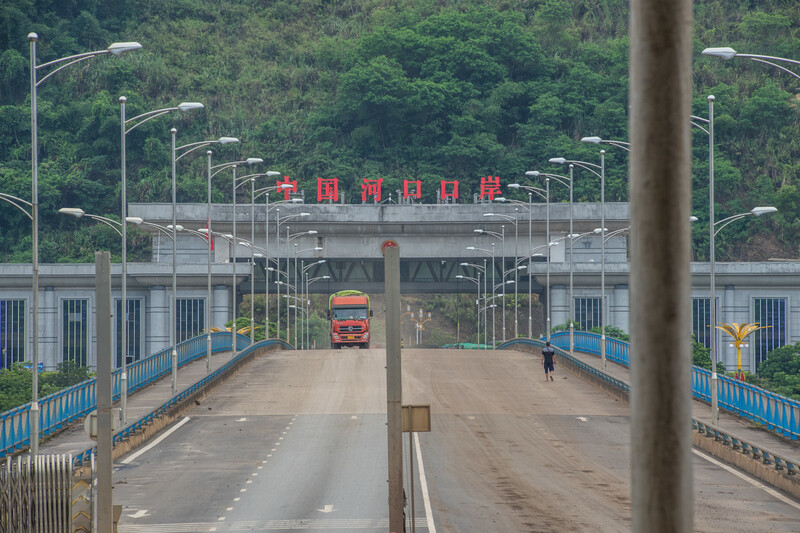AEIR 2023 Highlights Deepening Integration, Continued Economic Growth in the GMS

The Kim Thanh International Border Gate between Lao Cai (Viet Nam) and Yunnan Province (PRC) plays a vital role in the GMS northern corridor. Photo by ADB.
The Asian Economic Integration Report 2023 highlights the continued growth of integration in subregional initiatives and programs in Southeast Asia, including both in the GMS and the ASEAN, from 2006 to 2020.
Deepening subregional integration
A table presented the extent of regional cooperation and integration within subregional initiatives in Asia across the following eight dimensions: (i) trade and investment, (ii) money and finance, (iii) regional value chain, (iv) infrastructure and connectivity, (v) people and social integration, (v) institutional arrangements, (vi) technology and digital connectivity, and environmental cooperation. Economies in ASEAN and GMS are the most integrated in the dimensions measured. The GMS scored highest in trade and investment, regional value chains, institutional arrangements, and technology and digital connectivity. GMS also ranked well in infrastructure and connectivity, and technology and digital connectivity.
Continued economic growth
The report also highlights GMS’ continued economic growth amid enhanced connectivity and competitiveness through the GMS Program.
In 2021, GMS growth rebounded to 4.2%, from 0.3% in 2020. Most GMS member countries experienced rebound in growth in 2021 as COVID-19 vaccination coverage increased and mobility restrictions were eased. The report noted that for countries whose growth bounced back, recovery was underpinned by solid export performance and stronger domestic consumption and/or investment for some. The reopening of tourism is also expected to support the subregion’s economic recovery.
Establishment of the GMS Trade and Investment Task Force
However, the report also noted that some countries have yet to recover from the heavy public spending needed to combat the COVID-19 pandemic. Furthermore, current tight monetary conditions to combat inflation do not favor attempts to raise funds. Substantial funds are also needed for countries to take advantage of rapid changes in technology (especially through digitalization) and ensure that commitments to a green and inclusive growth are met.
To help GMS countries overcome these challenges and to meet GMS-2030 priorities for improving competitiveness, member countries agreed to establish the GMS Trade and Investment Task Force. The task force promotes trade and investment facilitation among members and external parties, which will enable open, fair, and nondiscriminatory business environments to flourish, and so help jumpstart GMS economies and sustain recovery.
Furthermore, establishment of the GMS Trade and Investment Task Force is consistent with the GMS 2030’s collaborative approach that embraces private sector solutions to leverage expertise and financing.
Work with other regional cooperation and integration programs like ASEAN will also ensure that GMS actions complement the wider regional agenda.
Since the GMS program’s launch in 1992, 122 investment projects and 236 technical assistance projects amounting to a total of $30.2 billion have been approved. Of this amount, ADB contributed $14.1 billion, GMS governments $6.6 billion, and other development partners/the private sector $9.5 billion.
Last Updated: 28 April 2023
